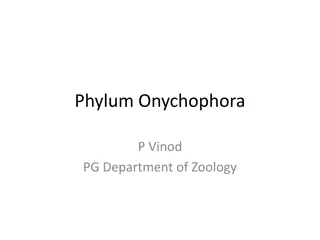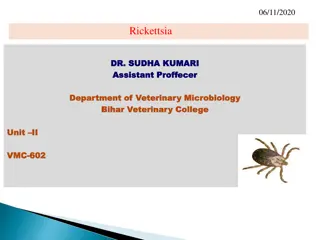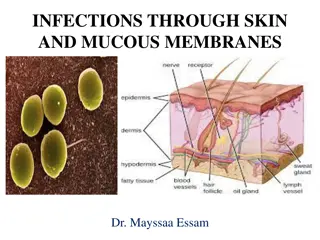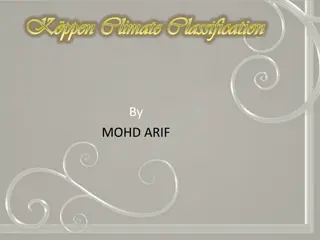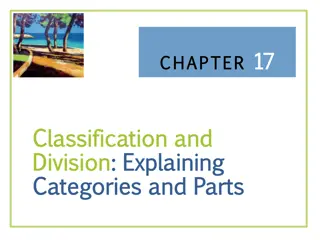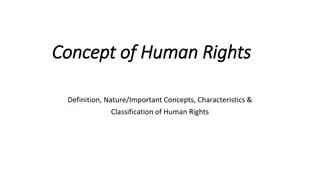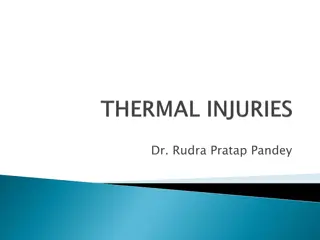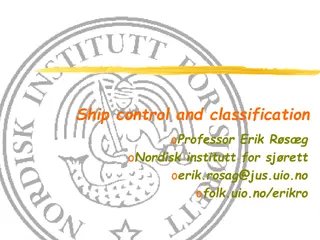Overview of Arthropods: Classification and Characteristics
Arthropods are a diverse group of invertebrates characterized by segmented bodies, appendages, and chitinous exoskeletons. They belong to the Phylum Arthropoda and are classified into four important classes: Myriapoda, Crustacea, Arachnida, and Insecta. This article explores the unique features of each class, including body structures, behaviors, and ecological roles. From millipedes to centipedes, crabs to insects, arthropods play crucial roles in ecosystems and human societies.
Download Presentation

Please find below an Image/Link to download the presentation.
The content on the website is provided AS IS for your information and personal use only. It may not be sold, licensed, or shared on other websites without obtaining consent from the author. Download presentation by click this link. If you encounter any issues during the download, it is possible that the publisher has removed the file from their server.
E N D
Presentation Transcript
LAB ARTHROPOD GROUPS-1
Characters of Arthropoda: Bodies & appendages (legs, mouth parts, antennae and genitalia) are segmented. Body walls are made up of a complicated saccharine & proteins secretion (non-living materials called chitin) which is resistant to water lose, to grow the animal mast be molt.
Adult (male & female) Pupa or nymph in some groups Eggs Larva
Phylum: Arthropoda 4 medical important Classes Myriapoda Crustacia Arachnida Insecta
I. Class Myriapoda: The most primitive, Elongated bodies, Many segments, Many legs With antennae & chewing mouthparts. A.Diplopoda (millipeds ( B.Chilipoda (centipeds (
A. Diplopoda (millipeds ): Many segments, Segments circular, Two pairs of legs per segment, Live on plant materials in gardens (herbaceous) Body covered with minute hairs & glands, If bothered either spray poisoning secretions or through hairs or both, causing sensitivity, rash, swelling but not killing.
2 pairs of legs - segment Antennae Body segments
Chilipoda (centipeds ): Many broad segments, One pair of legs in each segment, Predacious on other small arthropods, Provided with poison glands, First pair of leg modified into claws to inject poison Claws Painful bite may be killing. 1 pair of legs -segment
II. Class Crustacia Mostly aquatics, like prakin = crab = .etc, Very important as protein foods for people who live on sea or ocean shores. Body are of two (some times three) regions, one pair of legs in each segment. The body regions are cephalothoraxes and abdomen. Legs are modified to function in feeding, walking, swimming & meeting. One order which is terrestrial called saw bugs.
Medically the important spp. belong to copepod, small aquatic called water flea. The genus Cyclops is the transmitter (vector) of nematodes Dracunculus medinensis ,
III. Class Archanida () like spiders, scorpions, ticks & mites. They are characterized by having: A. 2 body regions cephalothorax & abdomen. B. In adult 4 pairs of legs, on the cephalothorax. No appendages on abdomen. C. No sensory antennae. D. Mouth parts all of sucking types (piercing, cutting, rupturing and then sucking). mouth parts composed of chelicerae & peripoda.
A. Order :Aranida (Spiders) Terrestrial & predacious. The abdomen joins to the cephalothorax by a narrow pedicel. All spiders are poisonous and silk producing, But very few of them are dangerous, or even killing. The black widow is the dangerous group.
B. Scorpions: Large to medium, Two body regions, Two modified clasping peripoda, Cephalothorax with 4 pairs of legs, Chelicerae small. The abdomen of two parts: a. wide anterior portion b. narrow, long posterior portion ending with sting needle and a poison gland.
Al- Jarrar scorpion: Found in the eastern of Zagros Mountain, Khanaquin, Mendili, Badrah, Jassan and down to Ahwaz (Iran). The scorpion when moving draws the tail behind and not having it stand on the ready. Very dangerous, may kill children or leave a large spot .
2. The black scorpion: Large, All over Iraq, Black and dangerous. There are mentions of killing children and even adult in Iraq.




